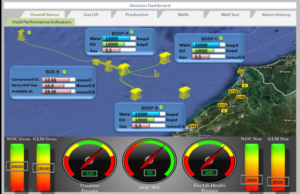 A large National Oil Company in Southeast Asia was engaged in a full retrofit and redevelopment of a 35-year old brownfield with a goal of automating offshore processes and significantly reducing production decline rates. APO was brought in to work with the teams developing the measurement and control instrumentation and the design of a tri-node collaborative work environment in the onshore operations centers, and to focus on a change management program that would enable the use of predictive analytics in new operations. After evaluating the financial impact and barriers to adoption of multiple analytics workflows, the project targeted analytics data for remote compressor monitoring, well tests, and bean adjustment. The full project was eventually expanded to include 25 asset workflows supported by an integrated live asset model. Operational workflows covered facilities monitoring, surface network and flow assurance, planning, well performance, artificial lift, and reservoir and enhanced oil recovery procedures.
A large National Oil Company in Southeast Asia was engaged in a full retrofit and redevelopment of a 35-year old brownfield with a goal of automating offshore processes and significantly reducing production decline rates. APO was brought in to work with the teams developing the measurement and control instrumentation and the design of a tri-node collaborative work environment in the onshore operations centers, and to focus on a change management program that would enable the use of predictive analytics in new operations. After evaluating the financial impact and barriers to adoption of multiple analytics workflows, the project targeted analytics data for remote compressor monitoring, well tests, and bean adjustment. The full project was eventually expanded to include 25 asset workflows supported by an integrated live asset model. Operational workflows covered facilities monitoring, surface network and flow assurance, planning, well performance, artificial lift, and reservoir and enhanced oil recovery procedures.
After identifying dispersed data sources and a lack of data management tools as early challenges, the team recommended a framework and architecture that included modernized field instrumentation and sensors, automated real time field data access, and surveillance and analytics at onshore operations center. The goal was to reduce unplanned deferment and downtime resulting from reactive workflows and institute a process of management by exception. The analytics platform was designed to aggregate sensor data from gauges, well headers, trunk lines, separators, gas lift injection lines, waterflooding equipment, tubing hangers, downhole assemblies, multi-phase flow meters, and even the microwave telecoms equipment used to transmit data from the platforms. The resulting actionable information is displayed in smart views and shared between offshore technicians, production analysts and technologists, rotating equipment engineers, facilities engineers, and process engineers. Advanced analytics allows customized views for workflow owners in order to facilitate the use of the collaborative work environment.
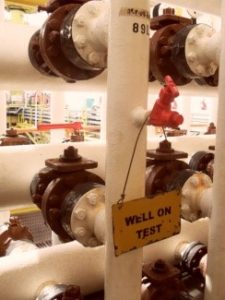 Results of the full Integrated Operations projects have been documented in over 10 individual SPE papers and include a 70% improvement in response time to the field, with fast-loop decision cycles reduced from 10 days to 5 minutes, and medium-loop asset operational reviews now performed hourly and daily rather than monthly. In addition, gas lift performance has improved by 20%, field visits and associated QSHE risk has been reduced by 70%, production has increased by three times from less than 5K to more than 15K bopd, and well uptime has improved from 60% to 80%. Since the work was performed as part of a Risk-Sharing contract, financial benefits have accrued to all participants in the program.
Results of the full Integrated Operations projects have been documented in over 10 individual SPE papers and include a 70% improvement in response time to the field, with fast-loop decision cycles reduced from 10 days to 5 minutes, and medium-loop asset operational reviews now performed hourly and daily rather than monthly. In addition, gas lift performance has improved by 20%, field visits and associated QSHE risk has been reduced by 70%, production has increased by three times from less than 5K to more than 15K bopd, and well uptime has improved from 60% to 80%. Since the work was performed as part of a Risk-Sharing contract, financial benefits have accrued to all participants in the program.
Presented at the Digital Energy Study Group of the Society of Petroleum Engineers’ Gulf Coast Section: “Change Management for Integrated Digital Energy Operations”, Feb 2012, Houston, Texas, http://www.spegcs.org/events/1865/
And in: “Asset Optimization Case Example; Petronas Samarang Field”, David Rossi, Scientific Advisor, Schlumberger SIS, October 2015, https://www.eiseverywhere.com/file_uploads/5146d8695240b8d59252c794bbbb3020_20151029PETRONASpresent.pdf

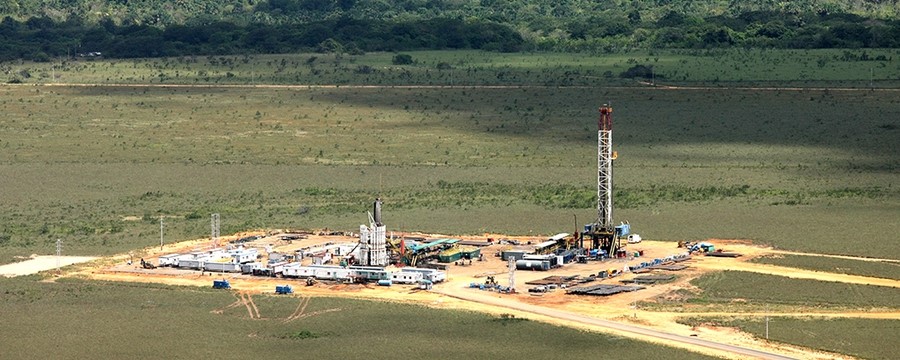
 The result was an average reduction in non-productive time due to logistics of 3 days per rig per month for the field operation over 6 months. By using the operating costs per hour for both locally and internationally operated rigs, the team was able to calculate that after an initial investment of USD $630,000, primarily in personnel and training costs, the return on investment for this project was USD $23 M in the first 6 months.
The result was an average reduction in non-productive time due to logistics of 3 days per rig per month for the field operation over 6 months. By using the operating costs per hour for both locally and internationally operated rigs, the team was able to calculate that after an initial investment of USD $630,000, primarily in personnel and training costs, the return on investment for this project was USD $23 M in the first 6 months.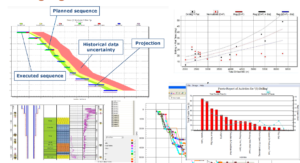 In addition, there were benefits in rigs and personnel being able to spend more time on projects with lower risk and higher drilling success rates. The next stage of the project was to develop a business case for reducing downtime in the other categories through the use of predictive analytics applied to depth-indexed and aggregated drilling engineering data, resulting in additional projected savings of USD $5.6 M.
In addition, there were benefits in rigs and personnel being able to spend more time on projects with lower risk and higher drilling success rates. The next stage of the project was to develop a business case for reducing downtime in the other categories through the use of predictive analytics applied to depth-indexed and aggregated drilling engineering data, resulting in additional projected savings of USD $5.6 M.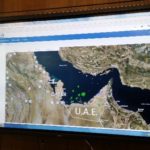
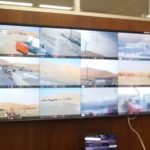 Data from rigs is transmitted in real time using WITSML (Wellsite Information Transfer Standard Markup Language) and is constantly monitored at the National Oil Company with a target to reduce the drilling duration of wells by 10% each year, and to reduce overall NPT (Non Productive Time) on a per-rig basis. The in-place system requires interoperability and cooperation between several companies and services and agreement on data governance and quality control in order to deliver actionable data. The data including LWD, MWD and Surface data are collected on the rig, aggregated, quality checked and synchronized and then transferred to the NDC (National Drilling Company) where they are accessed by a service company.
Data from rigs is transmitted in real time using WITSML (Wellsite Information Transfer Standard Markup Language) and is constantly monitored at the National Oil Company with a target to reduce the drilling duration of wells by 10% each year, and to reduce overall NPT (Non Productive Time) on a per-rig basis. The in-place system requires interoperability and cooperation between several companies and services and agreement on data governance and quality control in order to deliver actionable data. The data including LWD, MWD and Surface data are collected on the rig, aggregated, quality checked and synchronized and then transferred to the NDC (National Drilling Company) where they are accessed by a service company. Relevant data are extracted from the DDR (Daily Drilling Report) within an engineer’s data model, these data are sent and combined with the wellsite data. Using data analysis software, the results are matched against NPT in the DDR and the non-reported NPT checked for deviations. All NPT codes have been standardized (between onshore and offshore operations) and agreed by the operating companies and documented in the National Drilling Code of Practice. The final results including drilling performance against plan and real time video of rig operations are then ready for delivery to an intelligent subsurface centre for visualization and action. The system was first developed for solely operated and risked gas wells, but is being expanded to include all drilling operations in the country.
Relevant data are extracted from the DDR (Daily Drilling Report) within an engineer’s data model, these data are sent and combined with the wellsite data. Using data analysis software, the results are matched against NPT in the DDR and the non-reported NPT checked for deviations. All NPT codes have been standardized (between onshore and offshore operations) and agreed by the operating companies and documented in the National Drilling Code of Practice. The final results including drilling performance against plan and real time video of rig operations are then ready for delivery to an intelligent subsurface centre for visualization and action. The system was first developed for solely operated and risked gas wells, but is being expanded to include all drilling operations in the country. As part of the study, APO data management practitioners recommended a data governance structure with business data focal points in each of the OPCO’s, the criteria and operating requirements for a System of Record for the final drilling data, and the standardization of naming conventions to ensure data was associated with the correct borehole and for reporting of drilling events such as Rig Release Date. These recommendations were made to align with a future plan to utilize a business intelligence platform for integration and interoperability with other data initiatives in the National Oil Company such as Category Management and optimized supply chains for Oil Country Tubular Goods to service the rigs.
As part of the study, APO data management practitioners recommended a data governance structure with business data focal points in each of the OPCO’s, the criteria and operating requirements for a System of Record for the final drilling data, and the standardization of naming conventions to ensure data was associated with the correct borehole and for reporting of drilling events such as Rig Release Date. These recommendations were made to align with a future plan to utilize a business intelligence platform for integration and interoperability with other data initiatives in the National Oil Company such as Category Management and optimized supply chains for Oil Country Tubular Goods to service the rigs.